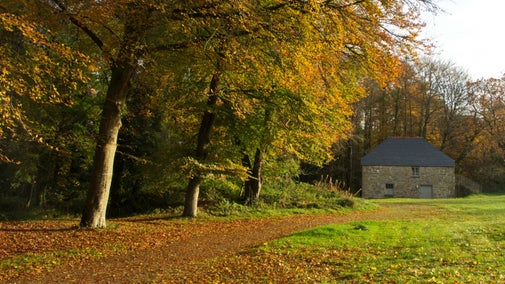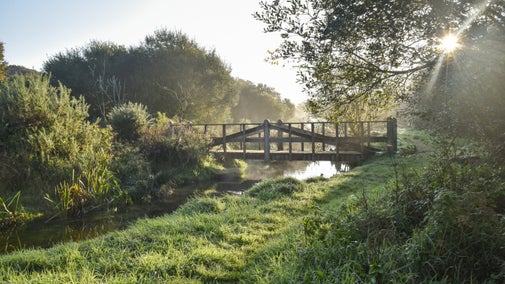The Dukes of Leeds and 19th Century Changes
Thomas Osborne, 4th Duke of Leeds (1713–89) inherited Godolphin in 1786 as the widower of Lady Mary Godolphin (1723–64). He commissioned a map of the estate (now in the collections of Kresen Kernow, Redruth) and let the property to a Captain Bains for £300 a year. Bains was still there five years later when Francis Osborne the 5th Duke of Leeds (1751–99) made his only visit to Godolphin, accompanied by celebratory bonfires on hills, canon fire and bellringing.
In preparation for the visit, building works were carried out at the house, blocking early windows and adding in a more fashionable new one. The works also involved rebuilding some of the first-floor structure and ceiling with extensive repairs to the roof, which suggests that the house must have been in poor condition.
This investment was not enough to keep the house in good order however. In 1804, local man Christopher Wallis noted in his diary ‘this venerable old mansion demolished, and the materials thereof sold by auction, the handsomest, largest and best proportioned Hall in England except Westminster Hall’.
In the 19th century a succession of local tenant farming families lived at Godolphin. They altered the buildings to suit their needs, partitioning rooms and storing apples and onions in the Kings Room. The Rosewarne family grassed over the six easternmost compartments of the Side Garden, preserving for us today the remains of the historic garden that lie beneath.
The Schofield Family
In 1937, Sydney Schofield (1901-1983) bought Godolphin, and so began an era of care and creativity. Sydney had first visited the estate whilst on a painting trip in Cornwall with his father, Walter Elmer Schofield (1867-1944) an eminent impressionist artist from America.
Godolphin had been recommended to them as a subject by Lilian Lanyon, wife of Herbert Lanyon the Cornish composer, pianist and photographer who lived in nearby St Ives. Some years later, Herbert and Lilian’s daughter Mary (1917–2008) married Sydney and together they set about preserving Godolphin.
Sydney was a committee member of the Society for the Protection of Ancient Buildings (SPAB) and combined a sensitivity to conservation with a farmer’s ‘make do and mend’ practicality. The couple bought back architectural elements of Godolphin which had been dispersed, introduced some new pieces from elsewhere and collected antiques with which to furnish the house. In 1957, they won a government grant to restore the roof and opened the house to the public for the first time.
By the late 1990s, the deterioration of the buildings was cause for concern. Sydney and Mary’s son John returned to live at Godolphin and took on management of the repair works. Like his father, John was a Committee Member of the SPAB and ensured that work done was respectful to the historic fabric of the buildings. John says they ‘worked with a painter’s eye’ to keep the beauty of Godolphin intact.







